DIY Wall-Mounted Aquarium Crafts for Kids
Are you ready to dive into a world of creativity with your kids? DIY wall-mounted aquariums are not just a fun craft; they are a fantastic way to blend art with science. Imagine transforming a plain wall into a vibrant underwater scene that captures the imagination! These projects are perfect for kids who love to explore and learn about aquatic life while expressing their artistic flair. In this article, we'll guide you through the process of creating your very own wall-mounted aquarium, from choosing the right materials to adding the final touches. So, grab your crafting supplies and let's get started on this exciting adventure!
Selecting appropriate materials is crucial for creating a safe and visually appealing wall-mounted aquarium. You want to ensure that everything you use is not only attractive but also safe for your little ones. Here are some options to consider:
- Glass: Traditional and beautiful, glass can provide a crystal-clear view of your aquatic masterpiece.
- Acrylic: Lightweight and shatter-resistant, acrylic is a safer option for kids.
- Eco-Friendly Alternatives: Consider using recycled materials or biodegradable options to create a sustainable aquarium.
Choosing the right material will set the foundation for your aquarium, ensuring it is both durable and safe for children to interact with.
Inspiration is key when crafting an aquarium. The sky's the limit when it comes to design! Here are some exciting ideas that kids can customize:
- Underwater Landscapes: Think of realistic scenes filled with rocks, plants, and perhaps even a hidden treasure!
- Tropical Themes: Bright colors and exotic decorations can transport you to a tropical paradise.
- Whimsical Fantasy Worlds: Let your imagination run wild with mythical creatures and enchanted settings.
Each of these themes offers a unique way for kids to express their creativity while learning about the aquatic world.
Creating an underwater landscape can be a fun project. Think of it as building a miniature ecosystem! You can incorporate rocks, plants, and other decorations to mimic a natural habitat for fish. For instance, use smooth pebbles as the base, add some driftwood for texture, and scatter artificial plants to create a lush environment.
Incorporating real aquatic plants can enhance the aquarium's authenticity. Not only do they look great, but they also help purify the water! Some suitable plants for wall-mounted aquariums include:
- Anubias: Hardy and easy to care for.
- Java Fern: Thrives in low light and provides hiding spots for fish.
- Marimo Moss Balls: Fun, unique, and low-maintenance!
Just ensure that you understand how to care for these plants to keep your aquarium thriving.
If you're looking for a low-maintenance option, crafting faux plants can be a great alternative. You can use materials like felt, plastic, or even recycled items to create realistic-looking artificial plants. This way, kids can unleash their creativity without worrying about upkeep!
Tropical-themed aquariums can bring vibrant colors and exotic elements into your home. Think bright fish and colorful decorations that evoke the feeling of a sunny beach. You can use bright blue and green hues for the background and add tropical fish cutouts to bring your aquarium to life. It's like taking a mini-vacation right in your living room!
Once you've gathered your materials and decided on a design, it's time to assemble your wall-mounted aquarium. This section outlines the essential steps for putting everything together:
The base is a vital part of the aquarium. It needs to be stable and durable to support the entire structure. Start by measuring your wall space and cutting your base material accordingly. Ensure that it's securely attached to the wall using appropriate hardware.
Safety is paramount when mounting the aquarium. Use strong brackets or wall anchors to ensure that the aquarium is securely attached. This will prevent any accidents and keep your kids safe while they admire their creation.
Once the aquarium is assembled, it's time to add the fish and decorations. You can choose from live fish, faux fish, or even decorative elements that reflect your chosen theme.
Selecting the right fish is essential for a successful aquarium. Consider kid-friendly options that are easy to care for, like guppies or bettas. These fish are not only colorful but also resilient, making them perfect for young aquarium enthusiasts.
Adding decorative elements can enhance the aquarium's aesthetic. Items like pebbles, shells, and figurines can help personalize the aquarium and make it truly unique. Encourage your kids to think creatively and add their own special touches!
Maintaining a wall-mounted aquarium is crucial for its longevity. Regular upkeep will ensure that it remains a beautiful focal point in your home. Here are some practical tips:
Establishing a regular cleaning routine helps keep the aquarium looking fresh. For faux setups, a simple dusting will do. For live fish, you'll need to clean the tank and replace some water regularly to keep it healthy.
For live fish, monitoring water quality is vital. Keep an eye on parameters like pH, ammonia levels, and temperature to maintain a healthy environment for your aquatic life.
Creating a wall-mounted aquarium is more than just a craft; it's an opportunity for kids to learn and bond with family. The joy of crafting together, along with the excitement of watching the aquarium come to life, creates lasting memories. So gather your supplies, unleash your creativity, and dive into this fun-filled project with your kids!
Q: Can I use real fish in my wall-mounted aquarium?
A: Yes, but ensure that you choose fish that are suitable for small tanks and are easy to care for.
Q: How do I clean the aquarium?
A: For faux plants, a simple dusting is enough. For live fish, perform regular water changes and clean the tank as needed.
Q: What materials are best for a kid-friendly aquarium?
A: Acrylic is often recommended for its safety and durability, but glass can also be used with proper supervision.
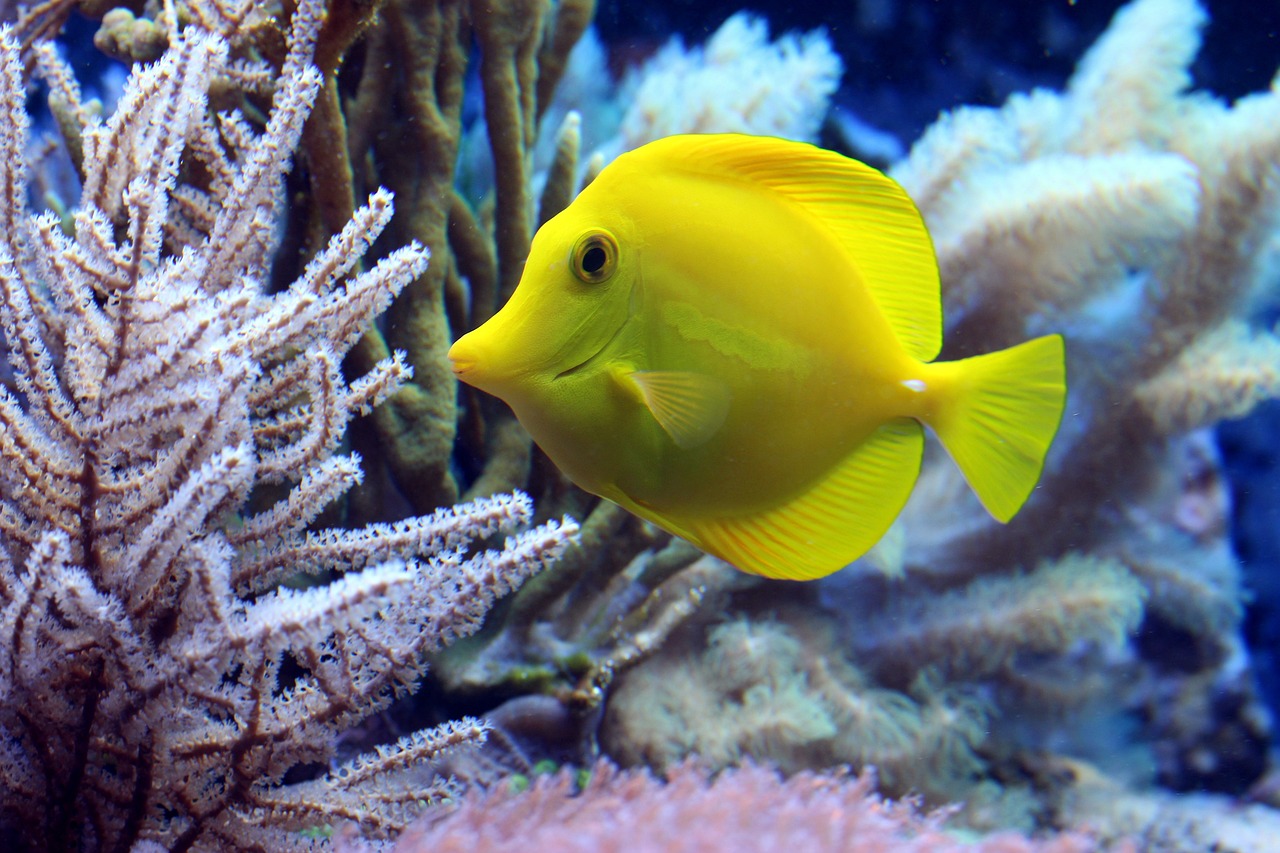
Choosing the Right Materials
When it comes to crafting a wall-mounted aquarium, is essential for both safety and aesthetics. Kids will be excited to dive into this creative project, but it’s important to ensure that what they use is safe and appropriate for an aquarium setting. Let's explore some of the best options available.
First off, you might want to consider using glass or acrylic as the main container for your aquarium. Glass is a traditional choice that offers clarity and durability, making it an excellent option for showcasing fish and decorations. However, it can be heavy and fragile, which might not be ideal for a kid-friendly project. On the other hand, acrylic is lighter and less prone to breaking, making it a safer choice for children. It also provides excellent visibility, allowing for a stunning display of aquatic life.
Another option to consider is eco-friendly materials. These are becoming increasingly popular as parents look for sustainable crafting solutions. For instance, you can find recycled plastic containers or even specially designed kits that use biodegradable materials. Not only do these options help the environment, but they also allow kids to learn about sustainability while they craft.
Here’s a quick comparison of materials to help you decide:
| Material | Pros | Cons |
|---|---|---|
| Glass | Durable, clear visibility | Heavy, fragile |
| Acrylic | Lightweight, shatter-resistant | Can scratch easily |
| Eco-friendly options | Sustainable, safe for kids | May lack durability |
Next, think about the decorative elements that will go inside your aquarium. Whether you choose real plants or faux decorations, the materials used will greatly impact the overall look. For instance, real aquatic plants can be made from live specimens or silk materials that mimic the appearance of real foliage. Faux plants can be crafted from various materials, including plastic and fabric, allowing for creativity without the need for maintenance.
In addition to the main aquarium structure and decorations, don't forget about the adhesives and mounting materials. Ensure that any glue or tape used is non-toxic and safe for children. This is particularly important if you are using live plants or fish, as harmful substances can compromise their health.
In summary, the materials you select for your wall-mounted aquarium project will set the foundation for a fun and safe crafting experience. By choosing wisely between glass, acrylic, and eco-friendly options, along with appropriate decorations and adhesives, you can create a beautiful aquatic display that kids will enjoy making and maintaining.
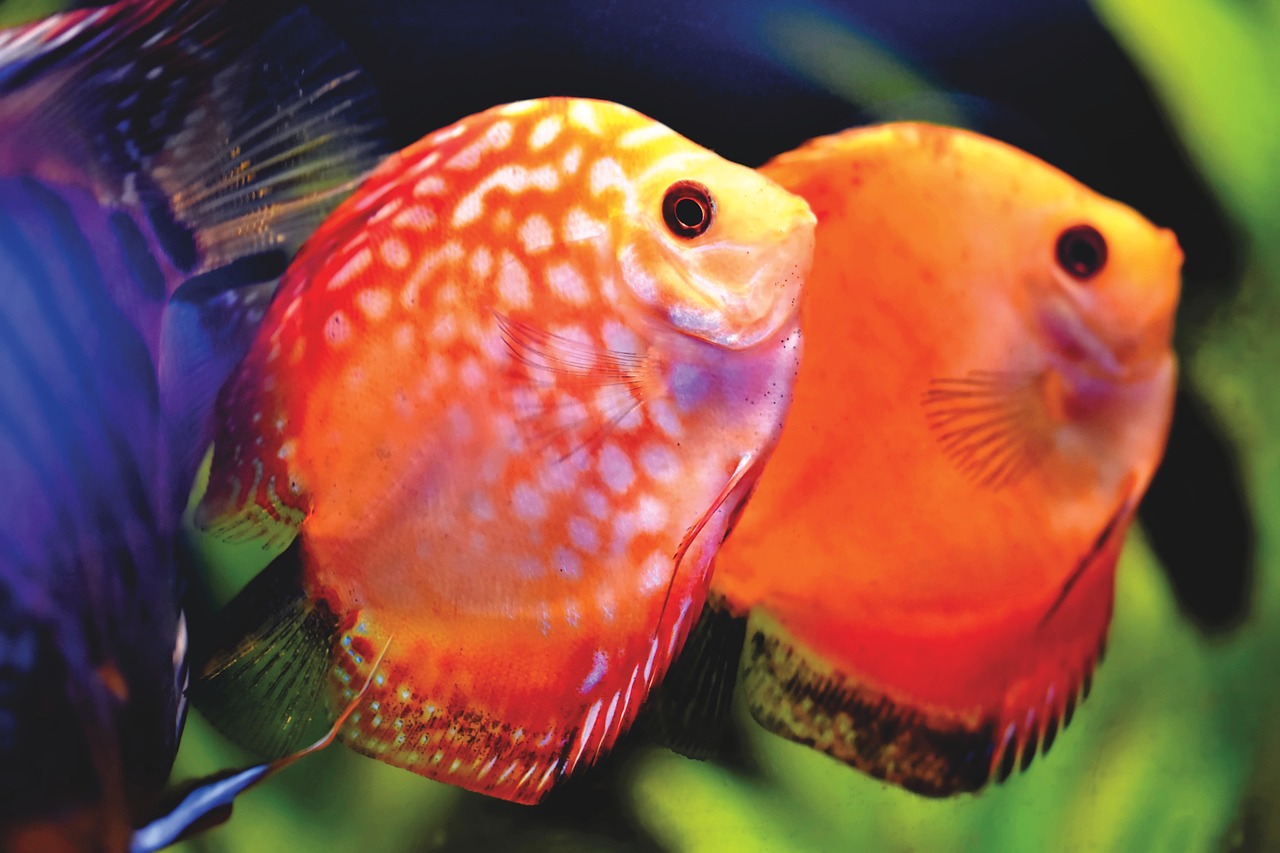
Design Ideas for Aquariums
When it comes to crafting a wall-mounted aquarium, the sky's the limit! The beauty of these projects lies in their versatility and the opportunity for kids to let their imaginations run wild. Whether they dream of exploring the depths of the ocean or creating a fantasy world filled with magical creatures, there are countless design ideas to choose from. Inspiration is key, and we’re here to help spark that creativity! Let’s dive into some exciting themes that kids can customize to make their very own aquatic masterpiece.
One popular theme is the underwater landscape. Imagine a serene scene filled with vibrant rocks, lush greenery, and colorful fish swimming freely. To create this effect, kids can incorporate various elements like pebbles, driftwood, and real or faux aquatic plants. This not only mimics a natural habitat but also allows for a hands-on learning experience about ecosystems. The combination of textures and colors can create a stunning visual that draws the eye and captivates the imagination.
Creating an underwater landscape can be a fun project. To really bring this theme to life, consider using a mix of natural materials. For instance, rocks can be arranged to form caves and hiding spots for fish, while plants can be placed strategically to create a sense of depth. Here are some tips to enhance your underwater landscape:
- Use a variety of plant heights to create visual interest.
- Incorporate some small figurines or decorations that fit the aquatic theme.
- Think about lighting—soft blue or green lights can mimic the ocean's glow.
Incorporating real aquatic plants can enhance the aquarium's authenticity. Not only do they add beauty, but they also contribute to the health of the aquatic environment. Some suitable plants for wall-mounted aquariums include Anubias, Java Fern, and Marimo Moss Balls. These plants are relatively easy to care for and can thrive in smaller spaces. Regular maintenance, such as trimming and monitoring water quality, will keep them looking vibrant and healthy.
For those looking for a low-maintenance option, crafting faux plants can be a great alternative. This allows kids to explore their creativity without the worry of caring for live plants. Various materials can be used for crafting realistic-looking artificial plants, such as felt, plastic, or even recycled materials. Techniques like painting and layering can create depth and texture, making the faux plants appear lifelike. Plus, it’s a wonderful way to introduce kids to the concept of recycling and creativity!
If your kids are drawn to vibrant colors and exotic elements, then a tropical theme might be the perfect fit! Imagine a lively scene filled with bright fish, colorful coral, and playful decorations. To design a tropical aquarium, consider using bold colors and fun shapes. Brightly painted rocks, colorful shells, and even miniature palm trees can transport viewers to a sunny tropical paradise. This theme not only brightens up any room but also encourages kids to learn about different fish species and their natural habitats.
In conclusion, the design possibilities for wall-mounted aquariums are endless! Whether your kids prefer the tranquility of underwater landscapes or the vibrant energy of tropical themes, each project offers a unique opportunity for creativity and learning. So gather your materials, unleash your imagination, and embark on an aquatic adventure that will surely be a delight for the whole family!
Q: What materials are best for a wall-mounted aquarium?
A: The best materials include glass or acrylic for the aquarium itself. For decorations, consider using real or faux plants, rocks, and various decorative elements.
Q: Can kids help with the assembly of the aquarium?
A: Absolutely! This is a great project for kids to participate in. They can help choose materials, design the layout, and even add decorations.
Q: How do I ensure the aquarium is safe when mounted on the wall?
A: Make sure to use proper mounting hardware and techniques. It's essential to secure the aquarium to wall studs and ensure it is stable to prevent any accidents.

Underwater Landscapes
Creating an underwater landscape can be a truly fun and imaginative project for kids. It's like diving into the ocean without getting wet! The key to crafting a captivating underwater scene lies in the details. You can mimic a natural habitat by incorporating a variety of elements such as rocks, plants, and decorations that reflect the beauty of marine life. Think of it as building a miniature world where fish can frolic and explore!
When designing your underwater landscape, consider using different types of materials to achieve depth and realism. For instance, you might use smooth pebbles to represent the ocean floor, while larger rocks can serve as hiding spots for fish. Here’s a quick rundown of essential components to consider:
- Substrate: Choose a base layer like sand or gravel to create an authentic ocean bed.
- Rocks: Incorporate various sizes and shapes of rocks to add dimension.
- Plants: Integrate real or faux aquatic plants to create a lush environment.
- Decorative Elements: Consider adding shells, driftwood, or even miniature treasure chests for a whimsical touch.
One of the most exciting aspects of crafting an underwater landscape is the opportunity to get creative. You can create a serene coral reef, a bustling underwater city, or even a magical underwater forest. The possibilities are endless!
Now, let’s take a closer look at how to effectively use real plants in your aquarium. Real aquatic plants not only enhance the visual appeal but also contribute to a healthier ecosystem by producing oxygen and providing shelter for fish. Some popular choices for wall-mounted aquariums include:
| Plant Name | Care Level | Light Requirements |
|---|---|---|
| Java Fern | Easy | Low to Moderate |
| Anubias | Easy | Low |
| Amazon Sword | Moderate | Moderate to High |
Using real plants can be a bit of a commitment, but it’s incredibly rewarding. Just remember to keep an eye on their needs regarding light and water quality. If you're looking for a low-maintenance option, crafting faux plants is a fantastic alternative. You can create your own artificial plants using materials like felt, plastic, or even paper. The goal is to make them look as realistic as possible while ensuring they’re safe for your aquarium.
In conclusion, crafting an underwater landscape is not just about assembling materials; it's about creating a vibrant world that sparks imagination and curiosity. So gather your supplies, let your creativity flow, and watch as your wall-mounted aquarium comes to life with an enchanting underwater landscape!
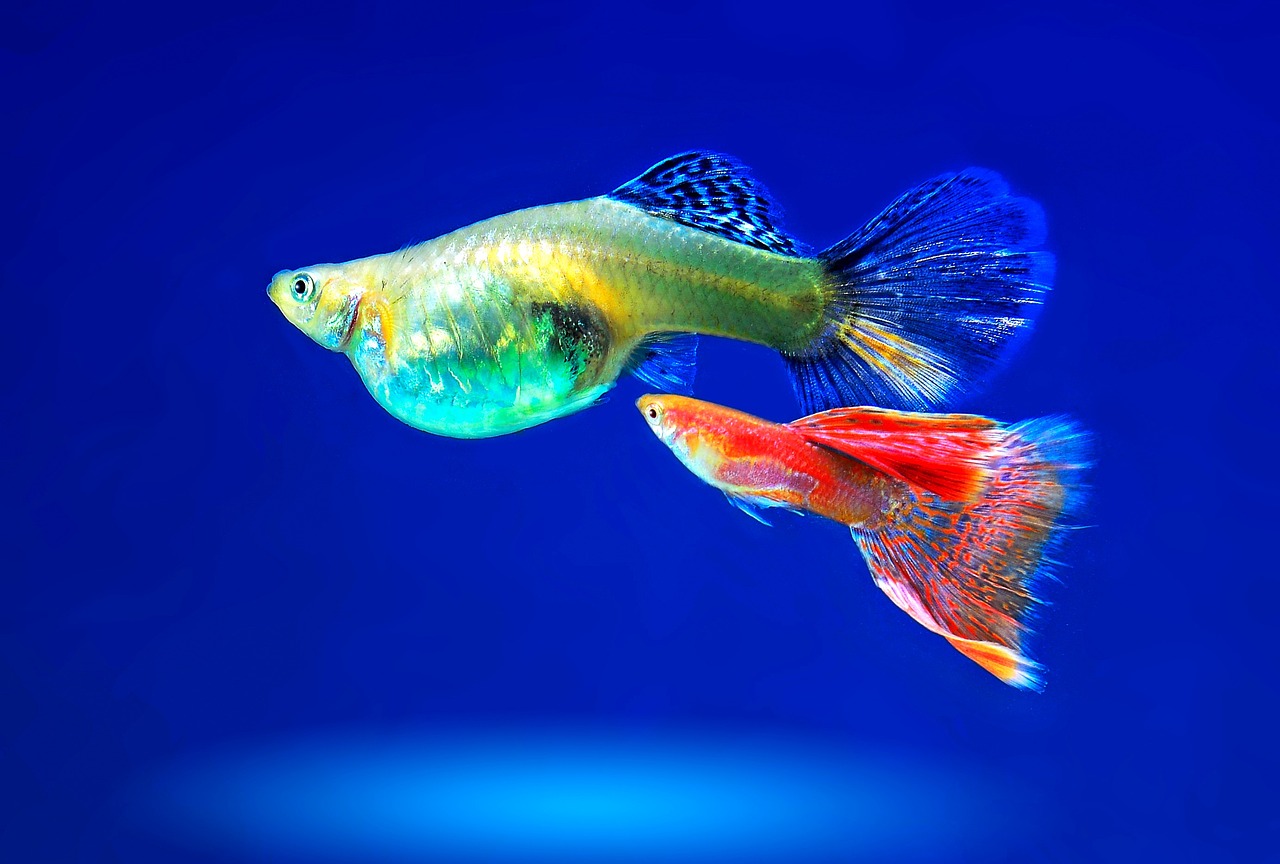
Using Real Plants
Incorporating real aquatic plants into your wall-mounted aquarium can significantly enhance its beauty and authenticity. Imagine peering into a vibrant underwater world, where lush greenery thrives alongside colorful fish. Not only do real plants add a natural aesthetic, but they also contribute to the overall health of the aquatic environment. They help oxygenate the water, absorb harmful toxins, and provide shelter for fish, creating a balanced ecosystem. However, before diving into this green adventure, there are a few key points to consider.
First and foremost, it's essential to choose the right plants. Some aquatic plants are better suited for wall-mounted setups than others. Here’s a quick overview of popular options:
| Plant Name | Light Requirements | Care Level |
|---|---|---|
| Anubias | Low to Moderate | Easy |
| Java Fern | Low to Moderate | Easy |
| Amazon Sword | Moderate | Moderate |
| Water Wisteria | Moderate | Easy |
As you can see, some plants are more forgiving and easier to care for, making them ideal for kids who are just starting to explore the world of aquatics. Once you’ve selected your plants, think about their placement within the aquarium. Position taller plants at the back and shorter ones in the front to create depth and visual interest. This arrangement mimics natural underwater habitats and allows for a more immersive experience.
Maintaining real plants requires some effort, but it can be a rewarding part of the crafting experience. Regularly check the plants for signs of growth or decay, and ensure they receive adequate light. If you're using a wall-mounted setup, consider using a small LED grow light to provide the necessary illumination. Additionally, remember to monitor the water quality, as plants can be sensitive to changes in their environment. Keeping the water clean and balanced will not only benefit the plants but also the fish that call your aquarium home.
Lastly, don’t forget to involve your kids in the care process! Teaching them about the plants' needs and how to nurture them will foster a sense of responsibility and connection to their aquarium. It’s a wonderful opportunity to bond, learn, and create lasting memories together.
- Can I mix different types of aquatic plants in my aquarium? Yes, mixing various plants can create a more diverse and visually appealing environment. Just ensure their care requirements align.
- How often should I change the water in my aquarium? It's generally recommended to change 10-20% of the water weekly to maintain a healthy environment for both plants and fish.
- Do I need special equipment for real plants? While not always necessary, using a grow light and a water conditioner can help ensure your plants thrive.
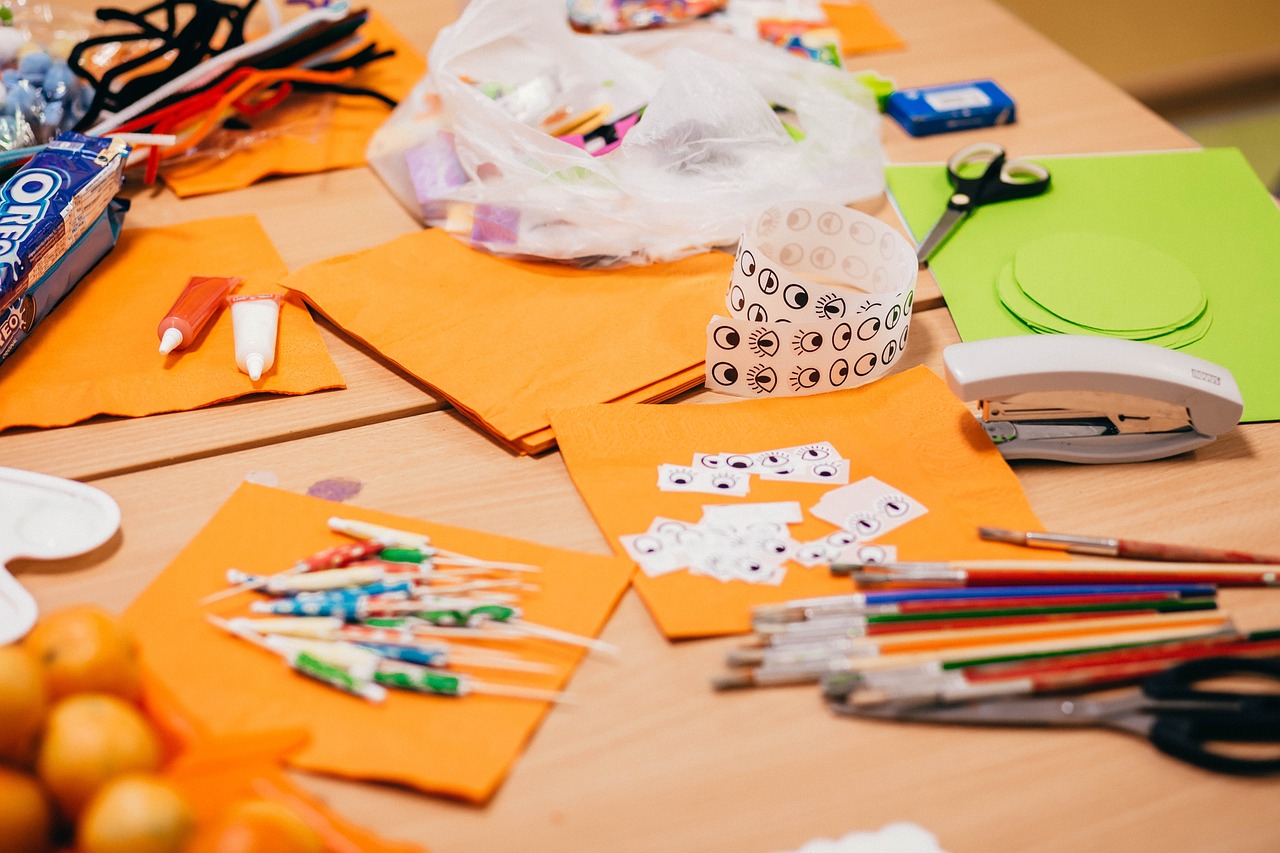
Crafting Faux Plants
When it comes to creating a stunning wall-mounted aquarium, incorporating faux plants can be a brilliant way to add color and texture without the hassle of maintenance. Imagine having a vibrant underwater garden that never wilts or fades! Crafting faux plants allows kids to unleash their creativity while ensuring that their aquarium remains visually appealing and easy to care for. But how do you get started? Let's dive into some fun and simple techniques!
First, consider the materials you might need. Faux plants can be made from a variety of supplies, including:
- Colored felt: This fabric can be cut into different shapes to mimic leaves and flowers.
- Plastic bottles: With a bit of creativity, you can transform them into whimsical seaweed or coral.
- Craft foam: Lightweight and easy to cut, craft foam can be shaped into various aquatic plants.
- Wire and beads: These can be used to create delicate, flowing plants that add movement to your aquarium.
Once you have your materials ready, it's time to get crafting! Start by sketching out your design. Think about the colors and shapes you want to incorporate. For instance, you might want to create a lush green backdrop with some pops of vibrant colors for flowers. After sketching, cut out your shapes from the chosen materials. Don't forget to involve your kids in this process; they will love the hands-on experience!
Next, assemble your faux plants. You can use a hot glue gun to attach different elements together, layering them to create depth. For example, you could glue a few smaller leaves onto a larger piece to give the illusion of a fuller plant. If you're using wire, bend it into the desired shape and secure it with glue or tape. This is where the magic happens, and your aquarium starts to come to life!
Finally, once your faux plants are complete, it's time to arrange them in your wall-mounted aquarium. Play around with the positioning until you find a layout that feels balanced and visually appealing. Remember, the goal is to create a captivating underwater scene that sparks joy and imagination. And the best part? Your faux plants will stay vibrant and beautiful for years to come!
In summary, crafting faux plants is not only a fun activity but also a fantastic way to personalize your aquarium. It allows kids to express their artistic side while ensuring that their aquatic habitat remains low-maintenance. So gather your materials, unleash your creativity, and watch as your wall-mounted aquarium transforms into a stunning underwater paradise!
Q: What materials are best for crafting faux plants?
A: Some popular materials include colored felt, plastic bottles, craft foam, wire, and beads. These are easily accessible and can be transformed into beautiful aquatic plants!
Q: How can I ensure my faux plants look realistic?
A: To achieve a realistic look, focus on layering different shapes and colors. Use various textures and sizes to create depth, and don’t hesitate to look at real aquatic plants for inspiration!
Q: Can I use faux plants with live fish?
A: Yes! Faux plants are a great addition to aquariums with live fish, as they provide hiding spots and enrichment without the need for maintenance.
Q: How do I clean faux plants?
A: Cleaning faux plants is simple! Just remove them from the aquarium and rinse them under warm water. You can use a soft brush to remove any debris, then let them dry before placing them back in the tank.
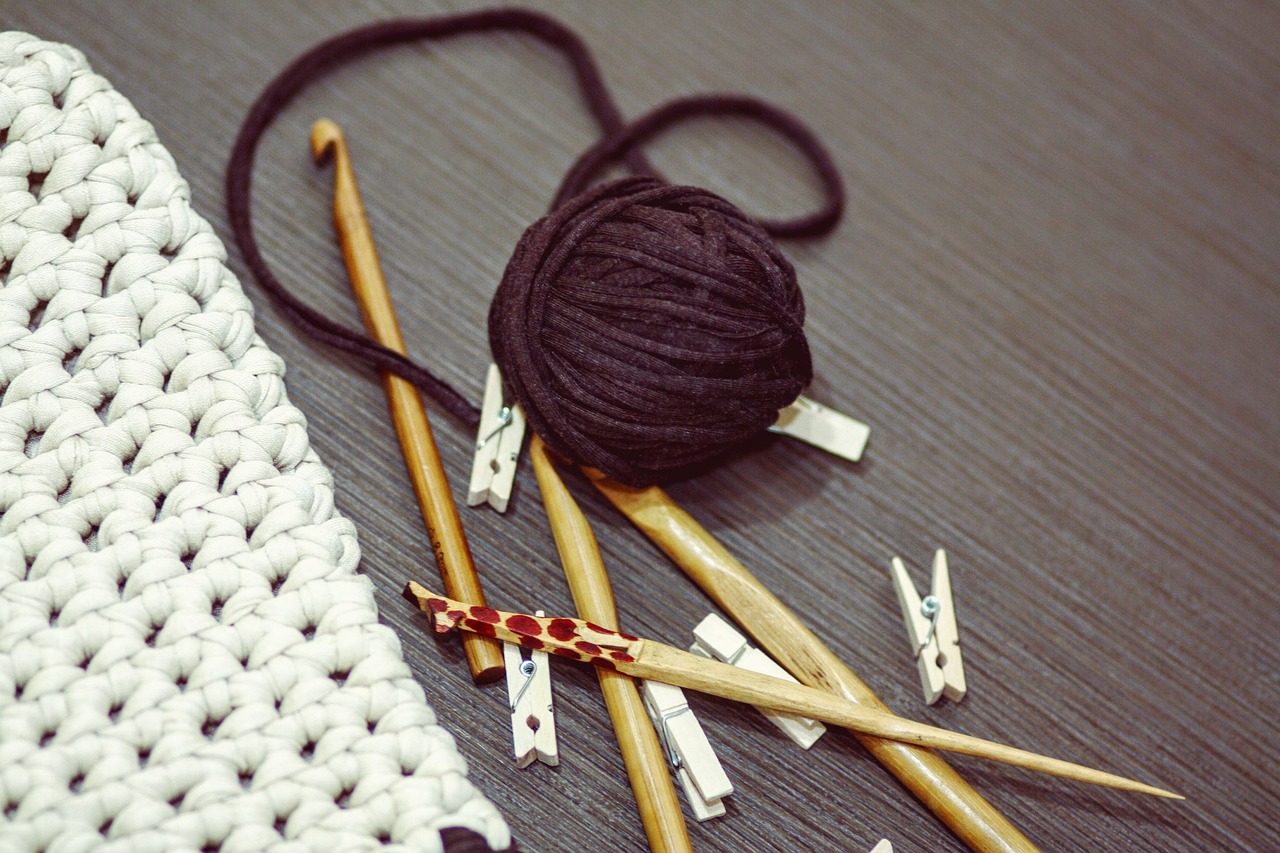
Tropical Themes
Creating a tropical-themed wall-mounted aquarium is like bringing a slice of paradise right into your home! Imagine vibrant colors, exotic fish, and lush decorations that transport you to a sunny beach or a serene lagoon. This theme is not only visually stunning but also provides an excellent opportunity for kids to explore their creativity while learning about marine life. To start crafting your tropical oasis, consider incorporating elements that capture the essence of a tropical environment.
Begin with the background of your aquarium. A bright blue or gradient backdrop can mimic the clear waters of the tropics. You could even use adhesive vinyl to create waves or coral designs that dance across the surface. Once the backdrop is set, it’s time to think about the decorations. Items like colorful pebbles, seashells, and faux coral can enhance the tropical vibe. You might even want to add small tropical-themed figurines, like mermaids or treasure chests, to spark the imagination.
When it comes to choosing the right fish, opt for species that embody the tropical spirit. Consider these kid-friendly options:
- Betta Fish: Known for their stunning colors and flowing fins, these fish are easy to care for and can thrive in smaller spaces.
- Guppies: With their vibrant colors and lively nature, guppies are a great choice for a lively tropical scene.
- Neon Tetras: These small fish add a splash of color and are perfect for community aquariums.
Don't forget about the plants! Incorporating real aquatic plants can add depth and authenticity to your tropical aquarium. Plants like Java Fern and Anubias are not only beautiful but also easy to maintain. If you're looking for a low-maintenance alternative, consider crafting faux plants using materials like felt or plastic. These can be designed to look like vibrant seaweed or colorful coral, adding a playful touch to your aquarium.
As you assemble your tropical aquarium, remember that the goal is to create a lively and inviting environment. The combination of bright colors, playful decorations, and the gentle movement of fish will not only captivate the eyes but also provide a wonderful learning experience for kids. They’ll learn about the ecosystems of tropical waters while enjoying the process of bringing their own underwater paradise to life!

Step-by-Step Assembly Instructions
Assembling a wall-mounted aquarium may seem daunting at first, but with the right guidance, it can be a fun and engaging project for both kids and parents. To kick things off, gather your materials and tools. You’ll need a suitable aquarium container (glass or acrylic), a base for mounting, adhesive or screws for securing, and decorative elements to bring your aquarium to life. The first step is to prepare the base; this is crucial for ensuring the aquarium remains stable and secure when mounted on the wall.
Start by selecting a sturdy piece of wood or a pre-made shelf that can support the weight of the aquarium. Make sure it’s wide enough to accommodate the aquarium and any decorations you plan to add. Once you have your base, it’s time to secure it to the wall. Use a level to ensure it’s straight, and mark the spots where you’ll drill. It’s essential to use appropriate wall anchors if you’re mounting on drywall to prevent any mishaps.
Next, let's talk about securing the aquarium itself. If you’re using a glass aquarium, ensure that it has a frame that can be attached securely to the base. For acrylic tanks, adhesive is often sufficient, but you can also use brackets for added security. Once the aquarium is in place, it’s time to add your decorations. This is where the real fun begins! You can choose from a variety of decorative elements such as rocks, faux plants, and even miniature figures to create a vibrant underwater scene.
When arranging your decorations, think about how fish would interact with their environment. Position rocks and plants to provide hiding spots and open swimming areas. If you’re incorporating real plants, make sure they are suitable for the aquarium size and lighting conditions. After decorating, the last step is to fill your aquarium with water and, if you choose, add fish. Remember to let the aquarium settle for a day or two before introducing any aquatic life, as this will help in stabilizing the environment.
Creating a wall-mounted aquarium opens up a world of curiosity and creativity, but you might have some questions along the way. Here are a few frequently asked questions to guide you:
- How do I choose the right size aquarium? The size depends on the space available and the types of fish you want to keep. A larger aquarium is generally easier to maintain due to more stable water conditions.
- Can I use live plants in my aquarium? Yes! Live plants can enhance the aesthetic and help maintain water quality. Just make sure to choose species that thrive in your aquarium conditions.
- What types of fish are best for beginners? Some kid-friendly options include guppies, bettas, and tetras, which are generally easy to care for and colorful.
- How often should I clean my aquarium? Regular cleaning is essential. For live setups, aim for a partial water change every 1-2 weeks, while faux setups require occasional dusting and wiping down.
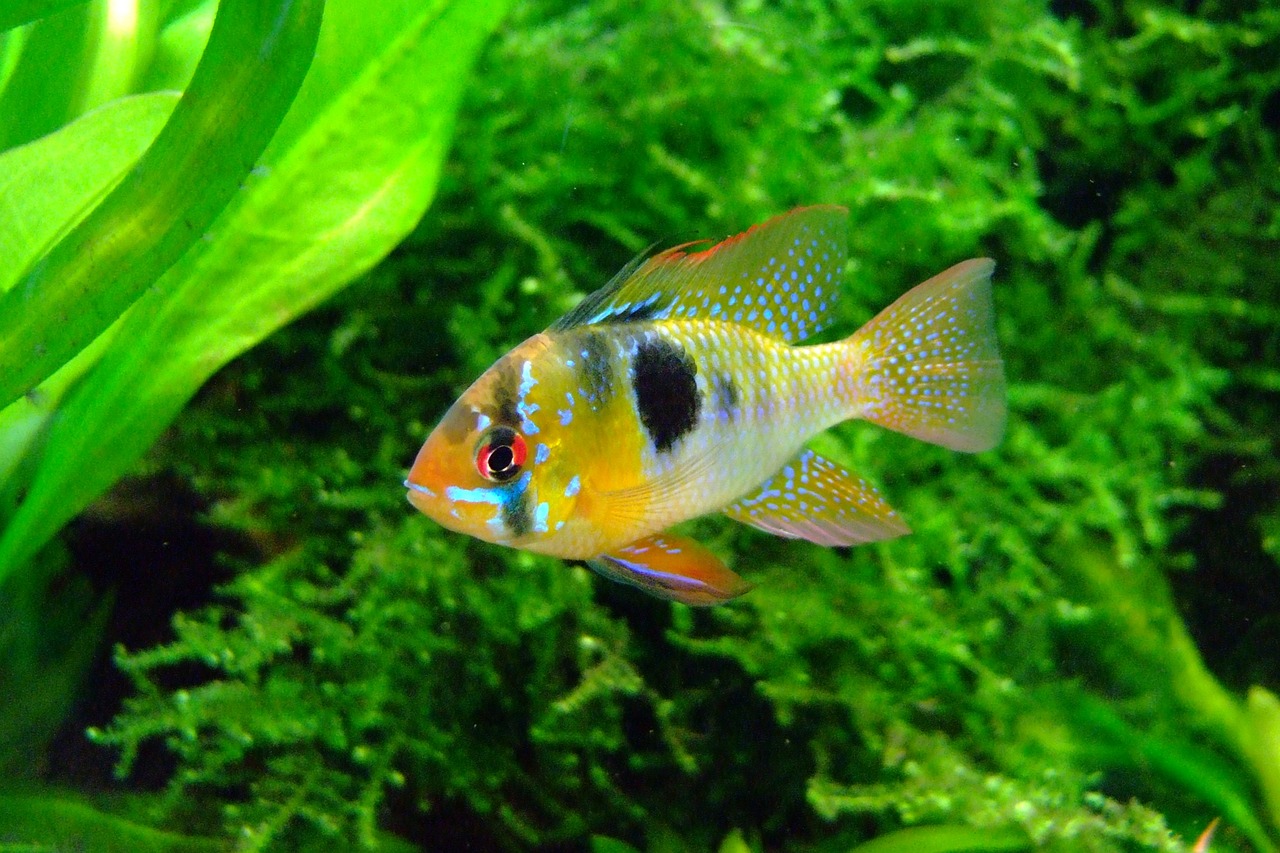
Preparing the Base
When it comes to crafting a wall-mounted aquarium, the base is absolutely crucial. Think of it as the foundation of a house; without a solid base, everything else can come crashing down. Start by selecting a sturdy material that can support the weight of your aquarium setup. Common choices include wood, acrylic, or even glass, depending on the design you envision. If you're opting for wood, make sure it’s treated to resist moisture, as this will ensure its longevity and stability.
Next, you’ll want to measure your space carefully. A well-prepared base should fit snugly against the wall and provide ample support for the aquarium. Use a level to ensure that your base is perfectly horizontal; this is vital for keeping the water evenly distributed within the aquarium. A slanted base can lead to uneven water levels, which can be detrimental to your aquatic life.
Once you've chosen your material and measured your space, it’s time to cut the base to size. If you're using wood, a circular saw will do the trick. For acrylic, a fine-toothed saw is recommended to avoid cracking. Ensure that the edges are smooth to prevent any accidental injuries during the assembly process. After cutting, consider painting or sealing the base to match your room's decor or to add an extra layer of protection against moisture.
Now, let’s talk about how to properly secure the base to the wall. It's essential to use strong anchors and screws that can handle the weight of the aquarium once it's filled with water and decorations. If you’re unsure about the weight, here’s a quick reference table to help you estimate:
| Item | Approximate Weight (per gallon) |
|---|---|
| Water | 8.34 lbs |
| Decorations | Varies |
| Fish | Varies |
| Total (for a 10-gallon tank) | Approximately 100 lbs |
With this information in hand, you can confidently choose the right anchors. For example, if your aquarium will hold 10 gallons of water, plus decorations and fish, you could be looking at a total weight of around 100 pounds! Therefore, using at least two heavy-duty wall anchors is a must to ensure that the base remains securely attached.
Finally, once the base is securely mounted, give it a thorough inspection. Check for any signs of instability or weakness. Remember, a well-prepared base is the first step to a successful wall-mounted aquarium project. It not only enhances the visual appeal but also provides a safe environment for your aquatic friends. So take your time, pay attention to detail, and you’ll be well on your way to creating a stunning underwater world!
- What materials are best for the aquarium base?
Sturdy options like treated wood, acrylic, or glass work well. Make sure they are moisture-resistant!
- How do I ensure my aquarium is level?
Use a level tool when mounting the base to avoid uneven water distribution.
- What weight should I consider when preparing the base?
Consider the weight of the water (approximately 8.34 lbs per gallon), along with decorations and fish.
- Do I need special tools for cutting the base?
A circular saw for wood or a fine-toothed saw for acrylic will be effective.
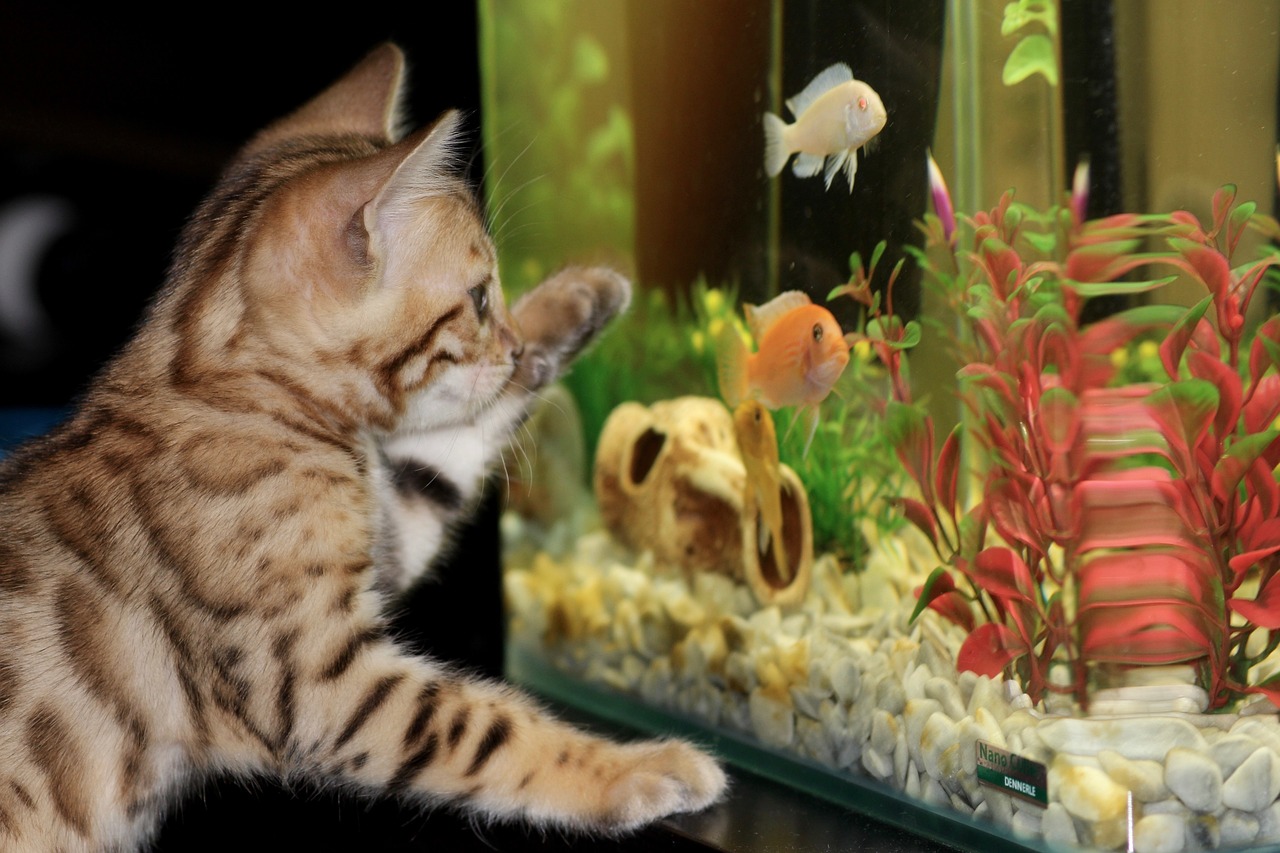
Securing the Aquarium to the Wall
When it comes to securing your wall-mounted aquarium, safety should be your top priority. You want to ensure that your creative masterpiece not only looks stunning but also stays firmly in place. Imagine the heart-stopping moment when a beautiful aquarium comes crashing down; it's a nightmare that can be avoided with the right techniques!
First, you need to assess the weight of your aquarium once it's filled with water, decorations, and any fish you might choose to include. A well-constructed aquarium can be surprisingly heavy, so understanding its weight is crucial. For a standard wall-mounted aquarium, the weight can range dramatically based on its size and materials. To give you a clearer picture, here’s a simple table illustrating typical aquarium weights:
| Aquarium Size | Approximate Weight (filled) |
|---|---|
| 10 gallons | 100 lbs |
| 20 gallons | 200 lbs |
| 30 gallons | 300 lbs |
Once you have an idea of the weight, the next step is to choose the right mounting hardware. Using high-quality wall anchors and screws is essential, especially if you're attaching the aquarium to drywall. For heavier aquariums, you might want to consider using toggle bolts or even securing it directly into a stud in the wall. This will provide extra support and stability.
Before you start drilling holes, it’s a good idea to mark the placement of your aquarium on the wall. Use a level to ensure that your aquarium will hang straight; nothing is more disheartening than an aquarium that’s slightly tilted! After marking, drill the holes based on your chosen mounting method, and insert the anchors or screws. Make sure to follow the manufacturer's instructions for the best results.
Finally, once the aquarium is mounted, give it a gentle tug to ensure it’s securely in place. It’s a good practice to check the stability regularly, especially after adding or removing decorations or water. This simple maintenance step can save you from potential accidents down the line.
In summary, securing your wall-mounted aquarium is a blend of careful planning, the right materials, and ongoing maintenance. By following these steps, you can enjoy your aquatic creation without the worry of it becoming a hazardous situation. So, grab your tools, and let’s make that aquarium a stunning centerpiece in your home!
- What type of wall anchors should I use for my aquarium?
For lighter aquariums, plastic wall anchors may suffice. However, for heavier tanks, consider using toggle bolts or securing directly into a wall stud for maximum support.
- How can I tell if my aquarium is securely mounted?
After installation, gently tug on the aquarium to test its stability. If it feels secure and doesn’t wobble, you’re good to go!
- Is it safe to mount an aquarium in a kids' room?
Yes, but ensure that it is securely mounted and out of reach of small children to prevent accidents.
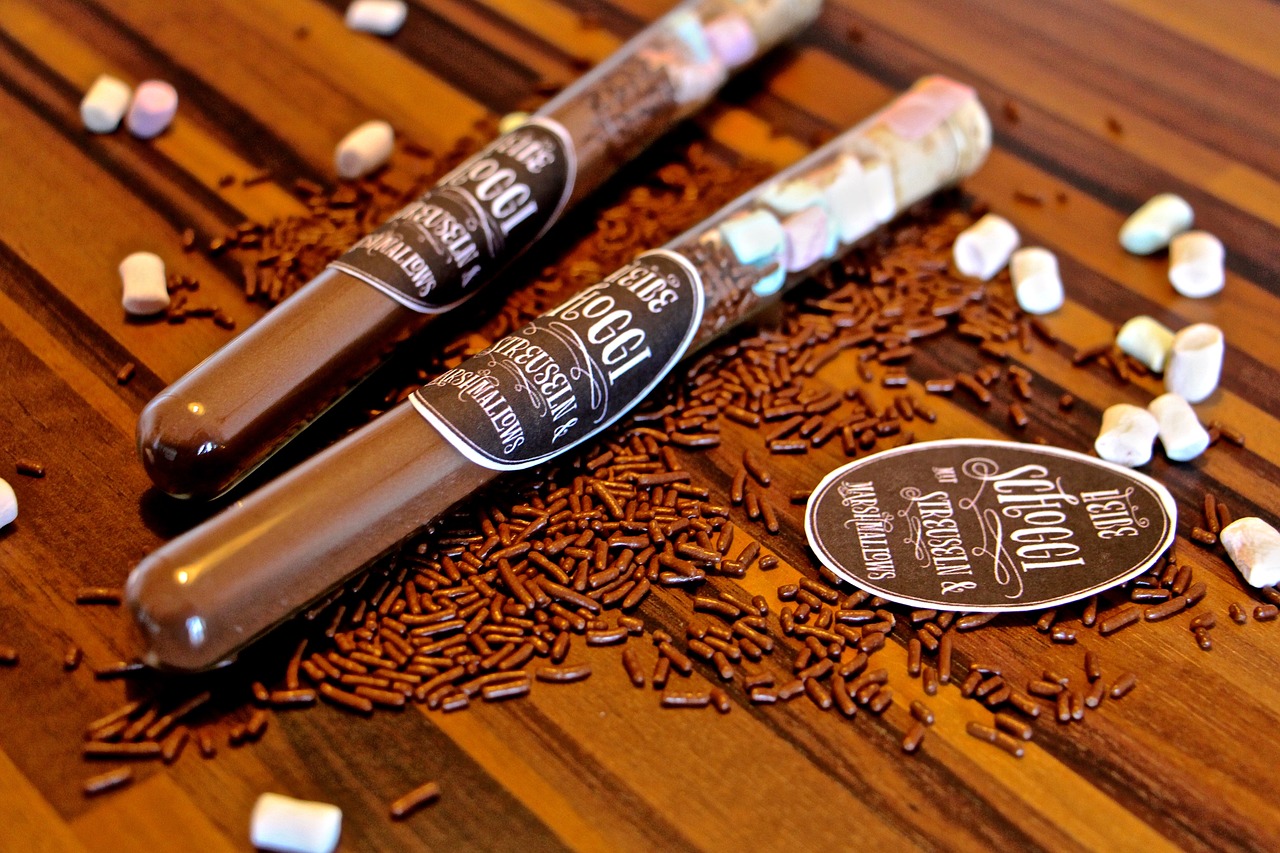
Adding Fish and Decorations
Once you've successfully assembled your wall-mounted aquarium, the next thrilling step is to add fish and decorations that will breathe life into your creation. This part of the project is where your creativity can truly shine! Imagine the joy on your child's face as they see colorful fish swimming amidst beautiful decorations. But how do you choose the right elements to make your aquarium not just a habitat, but a stunning visual masterpiece?
First, let’s talk about the fish. Choosing the right fish is essential for a successful aquarium. You want to opt for species that are not only visually appealing but also easy to care for, especially if this is a project for kids. Some kid-friendly fish options include:
- Betta Fish: Known for their vibrant colors and flowing fins, bettas are a popular choice. They thrive in smaller spaces and are relatively low-maintenance.
- Guppies: These tiny fish come in a variety of colors and patterns, making them a delightful addition to any aquarium.
- Neon Tetras: With their striking blue and red stripes, neon tetras add a splash of color and are peaceful fish that get along well with others.
When selecting fish, consider the size of your aquarium and ensure that the fish you choose can comfortably thrive in that environment. Remember, a happy fish is a healthy fish!
Now, let’s dive into the world of decorations. Adding decorative elements is like putting the cherry on top of a sundae—it enhances the overall aesthetic and provides a fun environment for your fish. You can get creative with a variety of items such as:
- Pebbles and Gravel: These can be used as a substrate at the bottom of your aquarium, providing a natural look while also helping to anchor plants.
- Shells and Driftwood: Incorporating natural elements like shells and driftwood can create a beautiful underwater landscape that mimics a fish's natural habitat.
- Figurines: For a whimsical touch, consider adding small figurines or themed decorations that reflect your child's interests, like treasure chests or underwater castles.
To ensure that your aquarium is not just a pretty sight but also a safe environment for the fish, avoid using any decorations with sharp edges or toxic materials. Always rinse new decorations thoroughly before placing them in the aquarium to remove any dust or residues.
Incorporating real plants can also enhance the look and feel of your aquarium. Live plants not only add beauty but also help maintain water quality by absorbing excess nutrients. However, if you're looking for a low-maintenance option, crafting faux plants can be a fantastic alternative. You can use materials like plastic, silk, or even homemade creations from paper or fabric to mimic the appearance of real plants, allowing you to customize your aquarium without the worry of upkeep.
As you embark on this decorating journey, remember that the goal is to create a vibrant and engaging environment. Encourage your kids to brainstorm ideas and let their imaginations run wild! By combining colorful fish with unique decorations, your wall-mounted aquarium will become a centerpiece of wonder and creativity in your home.
Q: Can I use live plants in my wall-mounted aquarium?
A: Yes, live plants can enhance the beauty of your aquarium and help maintain water quality. Just ensure they are suitable for the size and type of your setup.
Q: What types of decorations are safe for my fish?
A: Look for decorations made from non-toxic materials and avoid anything with sharp edges that could harm your fish.
Q: How do I maintain the decorations in my aquarium?
A: Regularly clean any decorations to prevent algae buildup, and replace any that show signs of wear or damage.
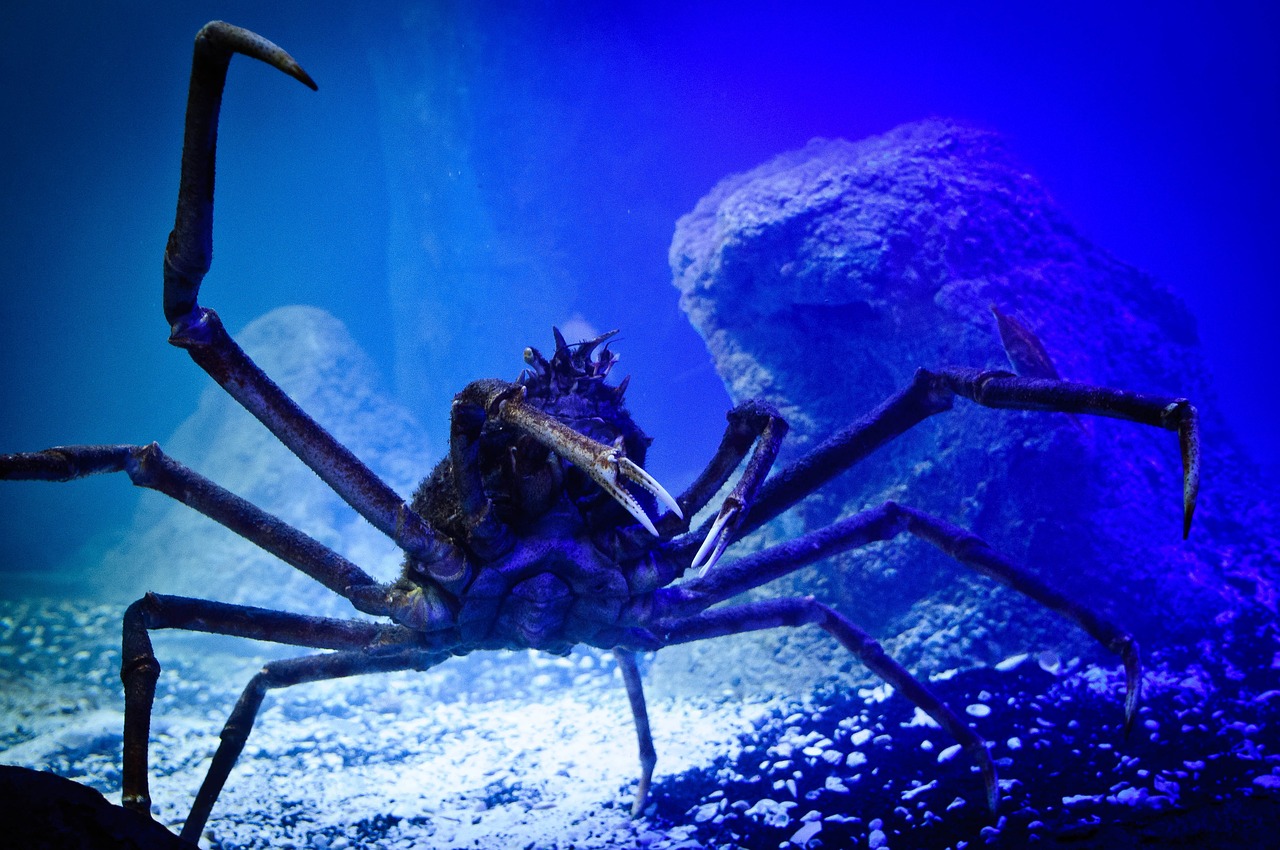
Choosing the Right Fish
When it comes to filling your wall-mounted aquarium with life, is crucial. Not only do you want fish that are visually appealing, but you also need to consider their care requirements, compatibility, and the overall environment of your aquarium. Since many kids are involved in this project, it's essential to select fish that are not only beautiful but also easy to care for. This ensures that the experience remains enjoyable and educational without overwhelming young crafters.
One of the best options for a wall-mounted aquarium is to opt for small, hardy fish that thrive in smaller spaces. Here are a few kid-friendly fish that can add a splash of color and excitement to your aquarium:
- Betta Fish: Known for their vibrant colors and flowing fins, Betta fish are relatively easy to care for and can live happily in smaller tanks. However, they are territorial, so it's best to keep them alone or with non-aggressive species.
- Neon Tetras: These little guys are a favorite among aquarists due to their bright blue and red stripes. They thrive in schools, so consider adding a few to make your aquarium lively.
- Guppies: With their wide variety of colors and patterns, guppies are a fantastic choice for beginners. They are friendly and can coexist with other small fish.
- Zebra Danios: These active swimmers are hardy and can adapt to various water conditions, making them perfect for novice aquarists.
Before making a final decision, it's essential to consider the size of your aquarium and the specific needs of each fish species. For instance, while Betta fish can live in smaller tanks, they do require a heater and a filter to maintain a stable environment. On the other hand, fish like Neon Tetras prefer to be in groups of six or more, which means you'll need to account for their social needs in your design.
Additionally, think about the color palette you want to achieve. Mixing different species can create a visually stunning display, but be mindful of their compatibility. Researching the behavior and preferences of each fish will help ensure a harmonious aquarium environment. You can also consider adding some faux fish for added visual interest without the responsibility of live care. These can be crafted from various materials, allowing for a creative touch while keeping maintenance simple.
In summary, selecting the right fish for your wall-mounted aquarium involves a blend of aesthetics, care requirements, and compatibility. By involving kids in this decision-making process, you not only teach them about aquatic life but also foster a sense of responsibility and creativity. Remember, the goal is to create a vibrant, lively aquarium that brings joy and learning into your home!
Here are some common questions parents might have about choosing fish for their kids' wall-mounted aquariums:
- What is the best type of fish for beginners? Betta fish and guppies are excellent choices due to their hardiness and low maintenance needs.
- How many fish can I have in a small aquarium? A good rule of thumb is one inch of fish per gallon of water, but always consider the specific needs of each species.
- Can I mix different species of fish? Yes, but ensure that the species you choose are compatible to avoid aggression and stress.
- Do I need a filter for my wall-mounted aquarium? Yes, a filter helps maintain water quality, which is essential for the health of your fish.
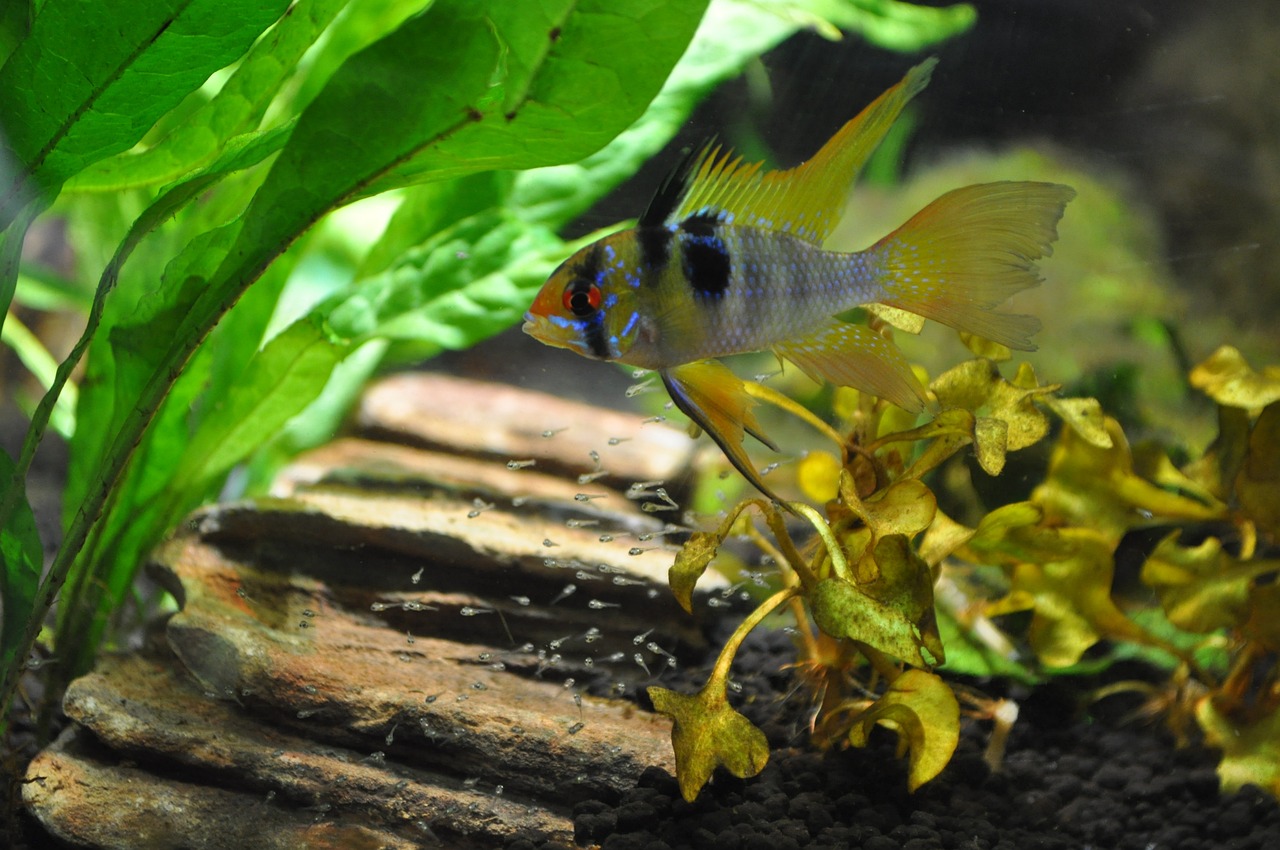
Decorative Elements
When it comes to crafting a stunning wall-mounted aquarium, play a pivotal role in creating an enchanting underwater world. These elements not only enhance the visual appeal but also provide a sense of authenticity to the aquarium. Think of your aquarium as a canvas, where each decorative piece adds a unique brushstroke to the masterpiece.
One of the first things to consider is the color palette. Bright, vibrant colors can bring your aquarium to life, while muted tones can create a serene environment. It's essential to choose decorations that complement each other and the overall theme of your aquarium. For instance, if you're going for a tropical theme, incorporating colorful coral reefs, bright pebbles, and lively fish figurines can create a vibrant scene.
Here are some popular decorative elements you might want to consider:
- Pebbles and Stones: These can serve as a natural base for your decor, providing a realistic look. Consider using smooth river stones or colorful glass pebbles to add texture.
- Shells: Seashells can evoke a beachy vibe and are perfect for adding a touch of the ocean. They can be placed strategically around the aquarium to create focal points.
- Figurines: Whether it's a sunken pirate ship or a whimsical mermaid, figurines can add personality to your aquarium. Kids will love choosing their favorite characters to include!
- Artificial Plants: If you're opting for faux plants, make sure they are made from non-toxic materials. They come in various shapes and sizes, allowing you to create a lush environment without the hassle of maintenance.
Additionally, you can create a theme-based aquarium by selecting decorations that tell a story. For example, if your kids are fans of a particular movie or show, why not incorporate elements from that universe? A “Finding Nemo” themed aquarium could feature clownfish figurines, sea anemone decorations, and even a miniature underwater castle. The possibilities are endless!
Ultimately, the key to a beautifully decorated wall-mounted aquarium lies in balancing the elements. Too many decorations can clutter the space, while too few can make it feel empty. Aim for a harmonious blend that allows each piece to shine while contributing to the overall aesthetic.
As you gather your decorative elements, remember that this is a creative process. Encourage your kids to express their individuality and make choices that reflect their personality. This not only makes the aquarium more personal but also fosters a sense of ownership and pride in their creation.
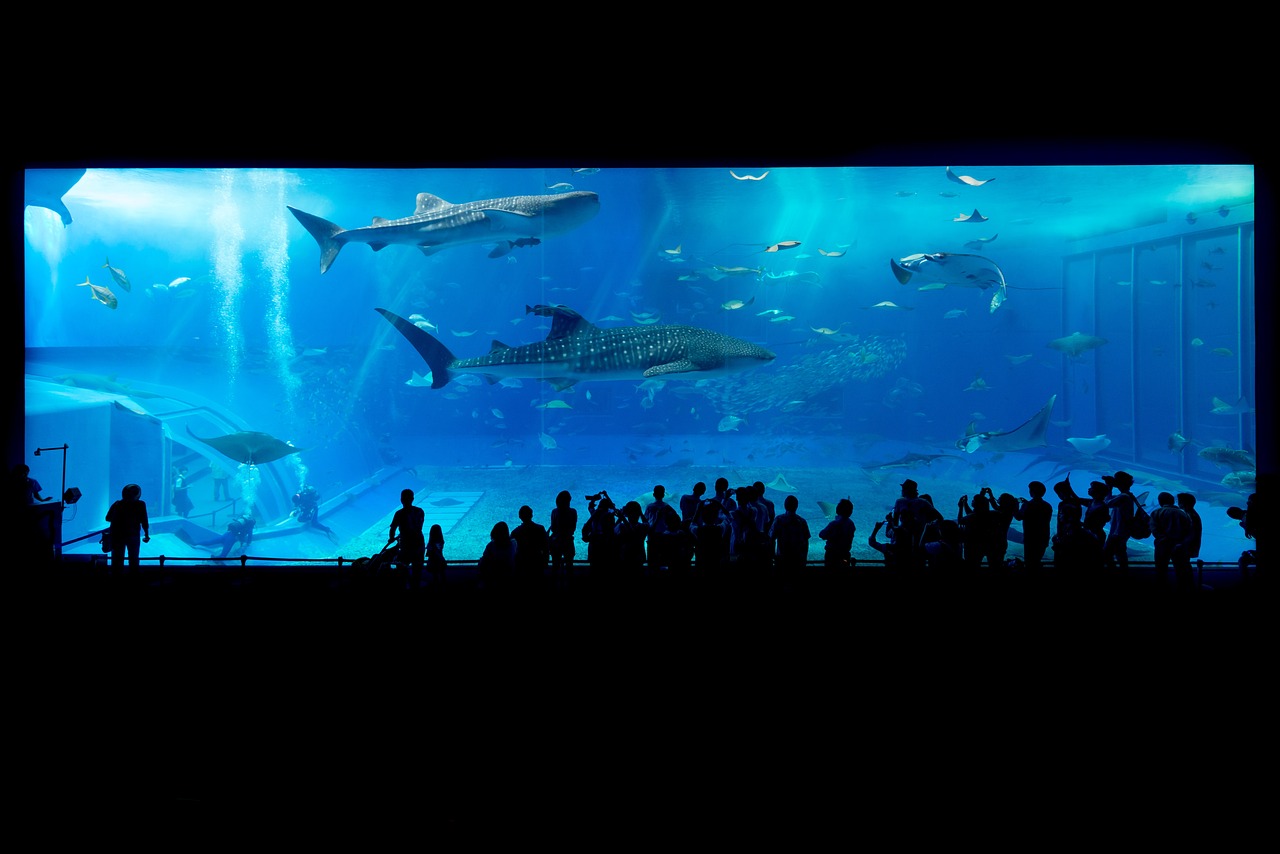
Maintenance Tips for Aquariums
Maintaining a wall-mounted aquarium is crucial for ensuring its longevity and the well-being of any aquatic life it may house. Just like a garden needs care and attention, your aquarium requires regular upkeep to thrive. Think of it as a miniature ecosystem that needs balance and harmony to flourish. In this section, we’ll dive into some practical tips that will help you keep your aquarium looking fresh and vibrant.
First off, establishing a regular cleaning routine is essential. Cleaning your aquarium doesn’t have to be a daunting task; it can be a fun family activity! Depending on whether you have live fish or faux decorations, the cleaning methods may vary. For live setups, it's important to clean the tank at least once every two weeks, while faux aquariums can be cleaned less frequently. Here’s a simple checklist to keep in mind:
- Remove any debris or uneaten food from the bottom of the tank.
- Clean the glass surfaces with a soft cloth to prevent algae buildup.
- Change 10-15% of the water weekly to maintain water quality.
Moreover, monitoring water quality is vital, especially if you have live fish. Just like we need clean air to breathe, your fish need clean water to live. Key parameters to keep an eye on include:
| Water Parameter | Ideal Range |
|---|---|
| pH Level | 6.5 - 7.5 |
| Ammonia | 0 ppm |
| Nitrite | 0 ppm |
| Nitrate | 20-40 ppm |
Testing kits are widely available and can help you keep track of these parameters. If you notice any fluctuations, it’s time to take action. For instance, if the ammonia levels rise, consider doing a partial water change or adding a filter to help clean the water.
Finally, don’t forget about the decorations! Whether you have live plants or faux ones, they also need care. Real plants should be pruned regularly to promote healthy growth, while faux plants can be wiped down with a damp cloth to remove dust. This not only keeps your aquarium looking good but also ensures that it remains a safe habitat for your fish.
In conclusion, regular maintenance is not just about keeping the aquarium clean; it’s about creating a healthy environment for aquatic life and ensuring that your crafting project continues to bring joy for years to come. So gather your family, set a schedule, and make this a fun routine that everyone can enjoy!
Here are some common questions that parents and kids might have about maintaining their wall-mounted aquariums:
- How often should I clean my aquarium? Aim for a thorough clean every two weeks, but spot clean as needed.
- Can I use tap water for my aquarium? Yes, but make sure to treat it with a water conditioner to remove chlorine and other harmful substances.
- What should I do if my fish are acting strangely? Check the water quality immediately; changes in behavior often indicate stress from poor water conditions.
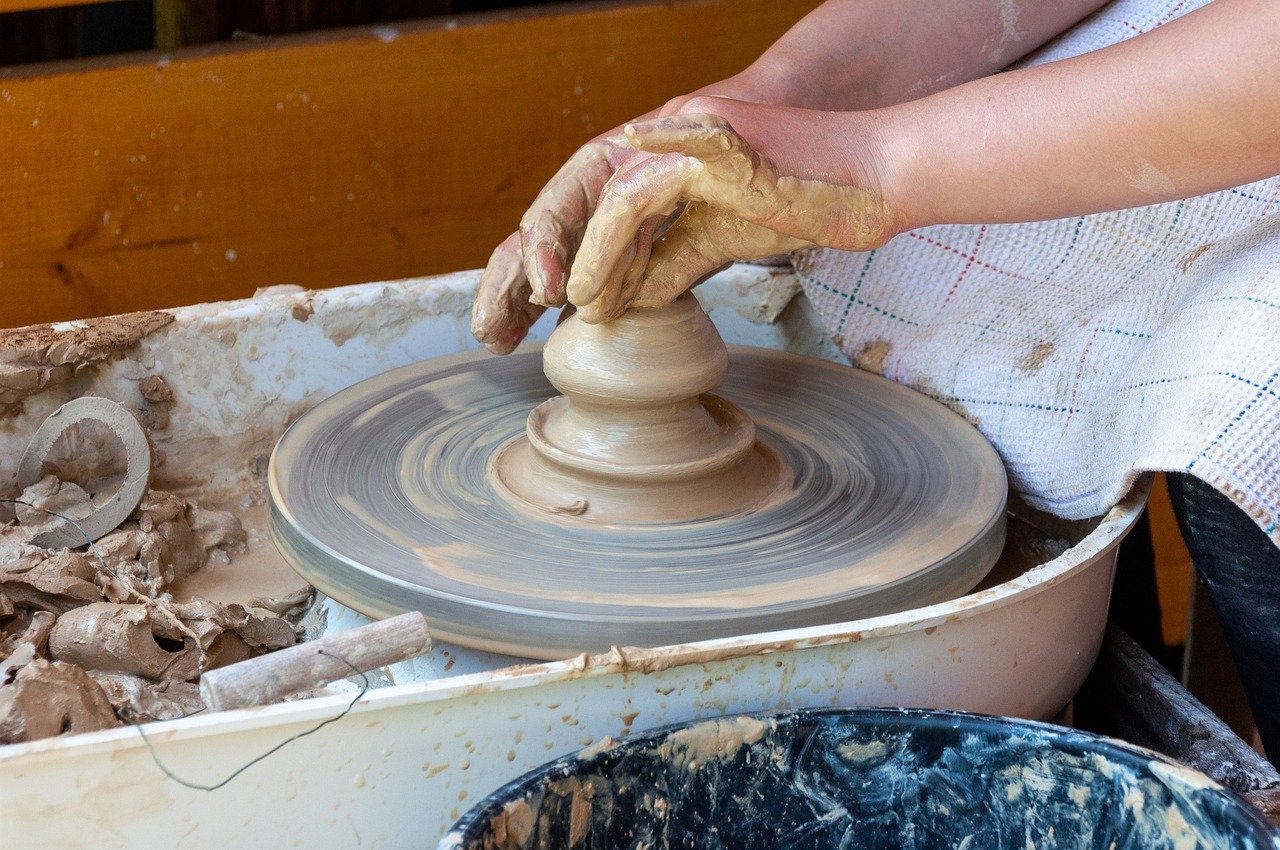
Regular Cleaning Routines
Establishing a regular cleaning routine is essential for keeping your wall-mounted aquarium looking vibrant and healthy. Just like any living environment, an aquarium requires maintenance to thrive, whether it houses live fish or decorative elements. Regular cleaning not only enhances the visual appeal but also promotes a healthy ecosystem for aquatic life. So, how do you go about it? Let's dive into some effective methods and schedules that will keep your aquarium in tip-top shape!
First and foremost, frequency is key. Depending on the type of aquarium you have, setting a schedule can help you stay on track. For instance, if you have live plants and fish, aim for a thorough cleaning every two weeks. However, if your aquarium features faux plants and decorations, a monthly cleaning might suffice. Here’s a simple table to help you visualize the cleaning schedule:
| Type of Aquarium | Cleaning Frequency |
|---|---|
| Live Plants & Fish | Every 2 weeks |
| Faux Plants & Decorations | Once a month |
When cleaning, start by removing any debris that accumulates at the bottom of the aquarium. Use a small aquarium vacuum or a siphon to gently suck up waste and uneaten food. This step is crucial because leftover food can decompose and lead to poor water quality, which can be harmful to your fish. After that, it’s time to wipe down the sides of the aquarium. A clean, algae-free surface not only looks better but also allows for better light penetration for any live plants.
For those with live fish, it’s important to monitor the water quality as part of your cleaning routine. Regularly test for ammonia, nitrites, and nitrates using a water testing kit. If you notice any spikes in these parameters, it may be time for a partial water change. Replacing 10-15% of the water every week can help maintain a stable environment for your aquatic friends.
Lastly, don’t forget to check the condition of your decorations and plants. If you notice any signs of wear or damage, replace them as needed. For faux plants, a quick rinse in warm water can do wonders to remove dust and keep them looking fresh. Remember, a clean aquarium is a happy aquarium!
- How often should I clean my wall-mounted aquarium? It depends on whether you have live plants and fish or faux decorations. Typically, a thorough cleaning is recommended every two weeks for live setups and once a month for faux setups.
- What should I use to clean the aquarium? Use a soft cloth or sponge to wipe down the glass and a siphon or vacuum for the substrate. Avoid harsh chemicals that can harm aquatic life.
- How can I tell if the water quality is poor? Signs include cloudy water, unpleasant odors, and stressed or lethargic fish. Regular testing for ammonia, nitrites, and nitrates can help you stay ahead of water quality issues.
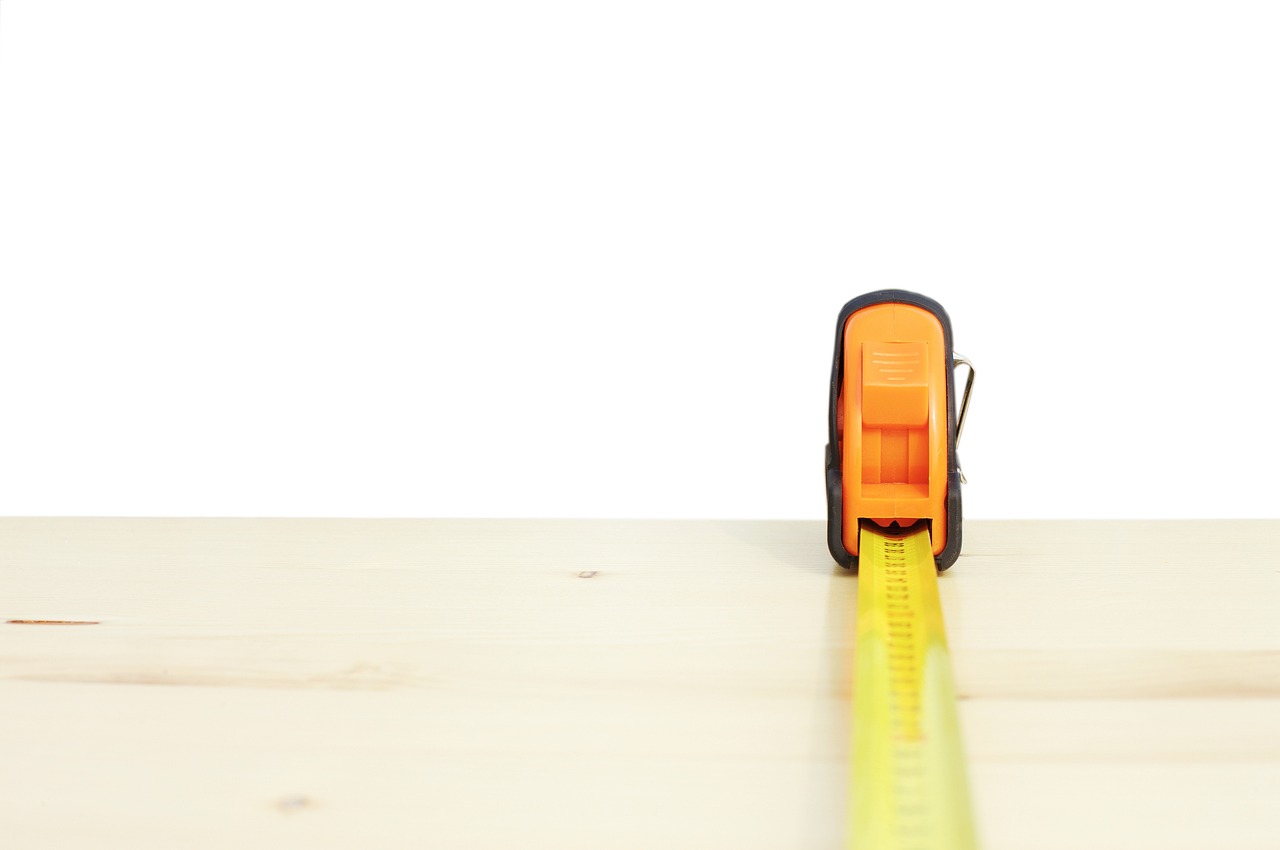
Monitoring Water Quality
When it comes to maintaining a healthy environment for your wall-mounted aquarium, is absolutely essential. Just like we need clean air to breathe, fish require clean water to thrive. This means keeping an eye on various parameters that can impact their health and happiness. So, what should you be checking regularly? Let’s dive into the key factors!
First and foremost, pH levels are crucial. The pH scale ranges from 0 to 14, with 7 being neutral. Most freshwater fish prefer a pH between 6.5 and 7.5. If the pH level fluctuates too much, it can stress your fish, leading to health issues. You can purchase pH test kits at any pet store to ensure your aquarium stays within the optimal range.
Next up is ammonia. This toxic compound can be a silent killer in your aquarium. It’s produced from fish waste, uneaten food, and decaying plants. Ideally, ammonia levels should be at 0 ppm (parts per million). Regular testing will help you catch any spikes before they become a problem. If you notice ammonia levels rising, it’s time to perform a partial water change to dilute the concentration.
Another important factor is nitrate levels. While nitrates are less harmful than ammonia, high concentrations can still pose a risk to your aquatic friends. Keeping nitrate levels below 40 ppm is advisable. You can manage this by doing regular water changes and ensuring your aquarium has adequate filtration.
Lastly, don’t forget about temperature. Fish are cold-blooded creatures, meaning their body temperature is regulated by their surroundings. Most tropical fish thrive in temperatures between 75°F and 80°F (24°C to 27°C). A reliable aquarium heater can help maintain a stable temperature, while a thermometer will allow you to monitor it easily.
To summarize, here’s a quick reference table of the ideal water quality parameters for your wall-mounted aquarium:
| Parameter | Ideal Range |
|---|---|
| pH Level | 6.5 - 7.5 |
| Ammonia | 0 ppm |
| Nitrate | Below 40 ppm |
| Temperature | 75°F - 80°F (24°C - 27°C) |
By keeping an eye on these water quality parameters, you can ensure your wall-mounted aquarium remains a safe and vibrant habitat for your fish. Remember, a little bit of effort goes a long way in creating a thriving aquatic environment!
- How often should I test the water quality? - It's best to test your aquarium water at least once a week, especially after introducing new fish or making changes to your setup.
- What should I do if my ammonia levels are high? - Perform a partial water change immediately and check your filtration system. Consider adding beneficial bacteria to help break down waste.
- Can I use tap water for my aquarium? - Yes, but make sure to treat it with a dechlorinator to remove harmful chemicals before adding it to your tank.

Conclusion: Crafting Memories
Creating a wall-mounted aquarium is more than just an arts and crafts project; it's a fantastic opportunity for kids and their families to come together and engage in a fun, educational experience. Imagine the excitement on your child's face as they watch their very own aquatic world come to life! This hands-on activity not only nurtures creativity but also fosters a sense of responsibility as they learn to care for their aquatic pets and environment.
As you embark on this crafting journey, you'll discover that each step—from selecting materials to decorating the aquarium—offers unique moments for bonding and learning. It’s like building a miniature ecosystem right in your home, where every plant, fish, and decorative element tells a story. Plus, the satisfaction of seeing the finished product mounted on the wall is truly rewarding. It becomes a centerpiece of pride, a testament to your family’s teamwork and creativity.
Moreover, the lessons learned during this project extend far beyond the crafting table. Kids will gain valuable insights into the importance of sustainability, the beauty of nature, and the joy of creating something with their own hands. And let’s not forget the joy of sharing this experience with friends and relatives! Imagine hosting a small gathering where your child proudly presents their aquarium, explaining every detail and sharing the stories behind each choice they made.
In conclusion, crafting a wall-mounted aquarium is not just about creating a beautiful piece of decor; it’s about crafting memories that will last a lifetime. So gather your supplies, unleash your creativity, and dive into this delightful adventure together!
- What materials do I need to create a wall-mounted aquarium?
You'll need a suitable container (like glass or acrylic), mounting hardware, decorative elements, and either live or faux plants and fish. Make sure to choose materials that are safe and appropriate for kids.
- Can I use live fish in my wall-mounted aquarium?
Yes, but it's essential to choose fish that are easy to care for and suitable for smaller environments. Always research the needs of the fish you select.
- How do I maintain my wall-mounted aquarium?
Regular cleaning, monitoring water quality (for live fish), and ensuring that plants and decorations are well-maintained are key to keeping your aquarium healthy and beautiful.
- Are there any eco-friendly options for creating an aquarium?
Absolutely! Consider using recycled materials for your aquarium structure and opt for faux plants made from sustainable materials to minimize environmental impact.
Frequently Asked Questions
- What materials do I need to create a wall-mounted aquarium?
To create a wall-mounted aquarium, you'll need materials such as glass or acrylic for the tank, a sturdy base for mounting, decorative elements like pebbles and shells, and possibly live or faux plants. Don’t forget tools like a drill for securing the aquarium and adhesive for attaching decorations!
- Can I use real fish in my wall-mounted aquarium?
Yes, you can use real fish! However, it's essential to choose kid-friendly species that are easy to care for, such as guppies or bettas. Make sure to monitor water quality and maintain a suitable environment for them to thrive.
- How do I securely mount the aquarium to the wall?
To securely mount the aquarium, ensure you use appropriate wall anchors and screws based on the weight of the aquarium when filled. It's best to consult a professional if you're unsure or follow detailed instructions for safe mounting.
- What are some fun themes for decorating my aquarium?
There are countless themes you can choose from! Popular ones include underwater landscapes filled with rocks and plants, tropical scenes with vibrant colors, or even whimsical fantasy worlds with miniature figures. Let your creativity flow!
- How often should I clean my wall-mounted aquarium?
Regular cleaning is crucial! For live fish, aim to clean the aquarium every 1-2 weeks, while faux setups can be cleaned less frequently. Establish a routine to keep everything looking fresh and vibrant.
- Are there any low-maintenance plant options for my aquarium?
Absolutely! If you're looking for low-maintenance options, consider using faux plants or hardy live plants like Java Fern or Anubias. These plants are easy to care for and will still add a touch of greenery to your aquarium.



















